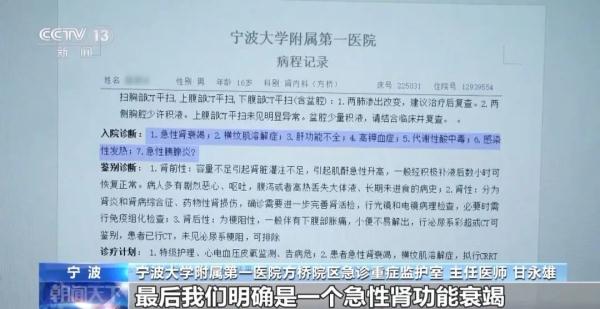Hot search first! This virus is about 2.5 times as contagious as influenza →
Recently, respiratory diseases have been high.
"Syncytial virus" topped the hot search list.
Some netizens asked questions.
"What is this?"

Syncytial virus is not a new respiratory disease.
Syncytial virus is not a new respiratory disease, and there was an anti-seasonal epidemic this summer.
Tang Zhichao, deputy director of the Department of Disease Control, Shunyi Women and Children Hospital, Beijing Children’s Hospital, said that respiratory syncytial virus is the most important virus pathogen that causes acute lower respiratory infection in children under 5 years old worldwide. Respiratory syncytial virus (RSV) infection is the primary cause of hospitalization of infants with viral respiratory infection, which seriously harms children’s health, especially premature infants and infants with congenital heart disease or primary immunodeficiency.
Children and adults can be infected.

Source: Yangguang. com
Syncytial virus is an RNA virus, which is transmitted by droplets and close contact, or by contaminated hands and objects. Patients often have upper respiratory symptoms after infection.
The incubation period of syncytial virus is usually 2-8.
Days, detoxification can last for 1-3 weeks. Early infection is mostly confined to the upper respiratory tract, showing symptoms of upper respiratory tract such as nasal congestion, runny nose, cough and hoarseness.
The typical symptoms of children infected with syncytial virus are fever, cough, stuffy nose and runny nose.
The typical symptoms of adult infection are very similar to the common cold, such as low-grade fever, cough, stuffy nose and runny nose.
Most patients’ symptoms will disappear spontaneously within 1-2 weeks, and a small number can develop into lower respiratory tract infection (i.e. bronchiolitis or pneumonia), which is more common in young infants. Clinical symptoms include cough and wheezing.
Gao Weiwei, chief physician of neonatal respiratory department of Guangdong Maternal and Child Health Hospital, said that syncytial virus is about 2.5 times as contagious as influenza.
At present, there are no syncytial virus vaccines and special therapeutic drugs on the market in China. Syncytial virus can be repeatedly infected and easily spread at home. In the absence of vaccines and effective drugs, measures such as strengthening personal protection should be taken to prevent infection.
The doctor reminds: Don’t overdo it and don’t "mix and match".
Recently, Xiao Zhao, a 16-year-old high school student, was admitted to the emergency intensive care unit for taking four kinds of cold medicines. Xiao Zhao found that she had symptoms of a cold and a little fever, so she took ibuprofen and crack at the same time. After taking the medicine, he felt that his symptoms were not obviously relieved, so he added two other cold medicines, which is equivalent to taking four cold medicines together.

Source: CCTV News
Gan Yongxiong, Chief Physician of Emergency Intensive Care Unit of Fangqiao Campus of the First Affiliated Hospital of Ningbo University: After being sent to the hospital, after our doctor’s judgment, we finally made it clear that it was acute renal failure and rhabdomyolysis, which was the effect of the superposition of these cold medicines on the kidneys.
The doctor reminded not to take too much medicine and not to "mix and match". Patients should pay attention to the drug instructions when taking drugs by themselves, and should not increase or decrease the types and doses of drugs at will. Even if you only take one drug, you can’t increase or decrease the dose at will. If multiple drugs need to be taken at the same time, it is best to consult a doctor in advance and take them according to the doctor’s advice. If you accidentally take too much medicine and cause discomfort, you should seek medical advice in time, inform the doctor in detail about the recent medication, and actively cooperate with the treatment.
In view of the recent increase in the number of outpatient and emergency departments in some places and the increase in the number of children infected with respiratory diseases, the responsible comrades of the National Health and Wellness Commission answered questions of concern to some people, especially the families of children, in an interview on November 23.
Q:
Recently, many local children’s specialized hospitals are overcrowded. What measures has National Health Commission taken to relieve them?
A:
Recently, we have continued to pay attention to the diagnosis and treatment of children susceptible to infectious diseases during the high incidence period, and guided all localities to strengthen overall planning and implement a graded diagnosis and treatment system.
Q:
Some community hospitals have recently set up inspection services for children, but some parents are worried that the lack of diagnosis and treatment capacity in community hospitals will delay their children’s illness. What should I do?
A:
National Health Commission has asked all localities to give full play to the role of medical associations, strengthen technical guidance to primary medical and health institutions, and improve the diagnosis and treatment ability of common infections and the efficiency of severe identification and referral.
Q:
Which hospitals are qualified to accept children with respiratory tract infection?
A:
National Health Commission has instructed all localities to publicize the information of medical institutions that can provide pediatric diagnosis and treatment services in the region, so as to facilitate the nearest medical treatment.
Q:
What should children do after they have a fever and cough?
A:
Large hospitals are crowded with people, waiting for a long time, and the risk of cross-infection is high. It is suggested that children with mild symptoms should first go to primary medical and health institutions and pediatrics of general hospitals. After seeing a doctor in a children’s specialist hospital, they can also be referred to primary medical institutions for follow-up treatment or home treatment through medical associations.
Q:
What conditions must the child go to the hospital for medical treatment?
A:
According to experts’ advice, children should take their children to see a doctor in time if they have ultra-high fever or persistent fever for more than three days, frequent cough affects their normal life, poor mental state or even drowsiness, increased respiratory rate or dyspnea, frequent vomiting, rash, headache or convulsions.
From: Xinhua Viewpoint
]